Shoulder instability doesn’t always require surgery. In many cases, conservative treatment can significantly reduce symptoms, improve joint function, and restore stability. These non-surgical options are especially valuable for individuals with mild to moderate instability, or those with multidirectional or non-traumatic forms of the condition.
This article explores the most effective non-surgical approaches, including physical therapy, lifestyle modifications, and medication strategies designed to support a stable and pain-free shoulder.
Understanding Conservative Management
Non-surgical (or conservative) management aims to strengthen and support the structures that stabilize the shoulder joint—without altering them surgically. The goal is to:
- Reduce pain
- Prevent further dislocations or subluxations
- Improve shoulder strength and control
- Maintain flexibility and function
This approach is especially suitable for:
- First-time dislocations
- Individuals with joint laxity or multidirectional instability
- Patients unwilling or medically unfit for surgery
1. Physical Therapy: The Cornerstone of Treatment
Physical therapy is the most important non-surgical intervention for shoulder instability. A tailored program helps restore joint stability and improve muscular coordination.
Key Focus Areas
- Rotator Cuff Strengthening: Reinforcing these muscles helps keep the humeral head centered in the socket.
- Scapular Stabilization: Exercises target the muscles that control the shoulder blade, such as the serratus anterior and trapezius.
- Proprioception and Neuromuscular Control: Training the brain to recognize joint position and respond to instability improves dynamic control.
- Posture Correction: Addressing forward shoulder posture and rounded backs reduces strain on the joint.
Examples of Exercises
- Isometric internal and external rotations
- Wall push-ups
- Resistance band rows
- Closed kinetic chain drills (e.g., plank variations)
Progress is typically gradual, starting with basic motion and stability, then progressing to sport-specific or functional movements.
2. Activity Modification
Making smart adjustments to daily activities can help avoid flare-ups or further injury.
Helpful Changes
- Avoid overhead lifting or extreme arm rotations until strength is regained.
- Use proper form during exercise and sports.
- Limit movements that have previously led to subluxation or dislocation.
In athletic populations, a brief rest from the sport may be necessary, followed by a gradual return with physical therapy guidance.
3. Pain Management and Medications
While not a long-term solution on their own, medications can be useful in controlling inflammation and discomfort during the rehabilitation process.
Commonly Used Medications
- NSAIDs (Non-Steroidal Anti-Inflammatory Drugs): Such as ibuprofen or naproxen, to reduce inflammation and pain.
- Acetaminophen: For pain relief when inflammation is not prominent.
- Topical analgesics: Creams or gels applied to the shoulder to relieve soreness.
These medications are best used alongside physical therapy and lifestyle adjustments, not as a substitute.
4. Supportive Bracing or Slings
In some cases—especially right after an injury—a sling or brace may be used to support the shoulder and prevent movement that could cause further damage.
Uses of Bracing
- Short-term immobilization after a dislocation
- Restricting motion during high-risk activities
- Supporting hypermobile joints in specific positions
However, prolonged use can lead to stiffness or muscle atrophy, so they should only be used under medical supervision.
5. Corticosteroid Injections (Selective Use)
For individuals with significant inflammation that doesn’t respond to oral medication, a corticosteroid injection into the shoulder joint may be considered. This can provide temporary relief and allow better participation in physical therapy.
It’s important to note that these injections are not a long-term fix and should be used sparingly.
When Non-Surgical Treatment Works Best
Conservative care has high success rates in:
- Multidirectional instability
- Individuals with generalized joint laxity
- First-time dislocations with minimal structural damage
- Patients focused on avoiding surgery
However, non-surgical options may be less effective when there’s:
- Severe structural damage (e.g., labral tear, bone loss)
- Repeated traumatic dislocations
- Poor response to rehab
In these cases, surgical intervention may be recommended.
Frequently Asked Questions
1. How long does non-surgical treatment take to show results?
Most patients begin to see improvement within 6 to 12 weeks, though full rehabilitation can take 3 to 6 months.
2. Can I return to sports after non-surgical treatment?
Yes, many people return to full activity. A structured rehab plan and clearance from a medical professional are essential.
3. Are home exercises enough, or do I need supervised therapy?
Supervised therapy ensures proper form and progression, but home exercises are critical for long-term success.
4. Will I need to wear a brace forever?
No. Braces are typically used temporarily, during acute phases or specific activities.
5. What happens if conservative treatment doesn’t work?
If symptoms persist or instability worsens despite non-surgical care, your doctor may recommend surgical options tailored to your specific condition.
